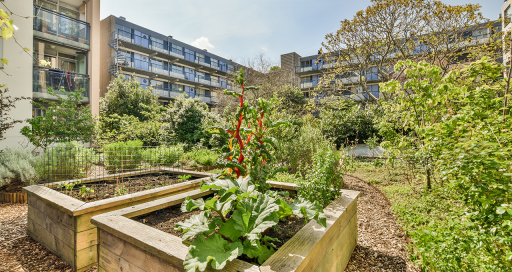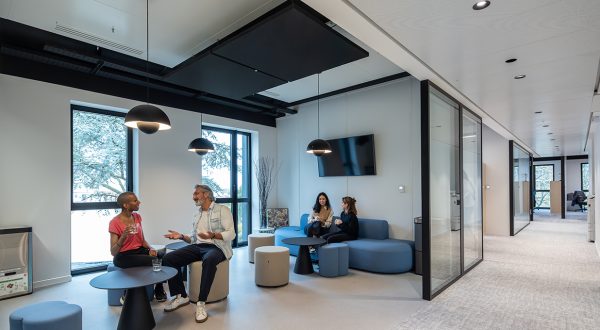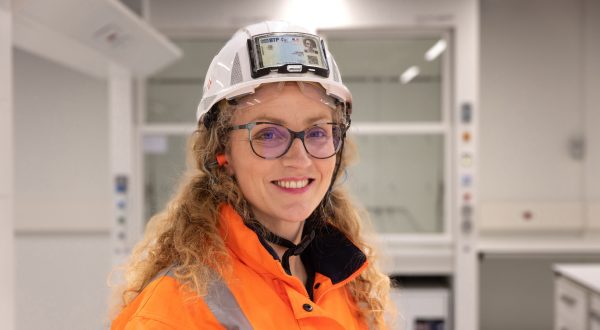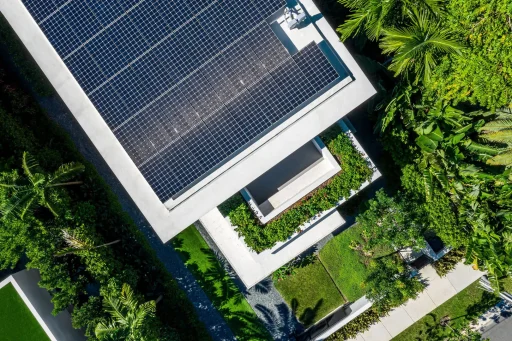While it has been less fully explored than topics such as greenhouse gas emissions or energy performance, the question of biodiversity is becoming increasingly prominent in real estate development projects. Regreening and nocturnal lighting are two of the major related action levers, in addition to certification and legislation.

To reduce the pressures on fauna and flora, restore degraded ecosystems wherever possible, and bring about profound changes in order to stop or reverse nature’s trajectory of decline, the preservation and promotion of biodiversity are becoming integral elements in the design briefs for real estate and infrastructure development projects.
From the Bioclimatic PLU (local urban development plan) to the National Biodiversity Strategy, recent changes in French legislation reflect the urgency of rallying all economic and institutional stakeholders to the cause. The famous ZAN (zero net artificialisation) law, though it contains few provisions aimed directly at biodiversity, does indirectly protect natural ecosystems.
Certifications
While frameworks such as BREEAM and HQE® target overall environmental performance and offer limited recognition of elements such as biodiversity, the Effinature (IRICE) certification and BiodiverCity® (CIBI) label are fully focused on responsibility for natural ecosystems. Effinature is a technical and operational tool to manage artificialisation risks for integrated ecological projects. BiodiverCity helps project teams to consider biodiversity and the relationship between site users and nature before entering the design phase. They share the common goal of preserving and promoting biodiversity on construction and renovation sites.
With the support of these tools, how are businesses faring, particularly in the building sector? Is the theme of nature in the city, which now features consistently in urban development projects, becoming a prerequisite in the real estate sector? And at which stages? Design? Construction? Renovation? Building life cycle management?
“Many VINCI Energies business activities, because they occur early on in projects, perhaps have less influence over nature-related issues,” explains Romuald Peton, Head of Environment at VINCI Energies and Chairman of the environment commission at SERCE, an organisation representing 260 companies engaged in energy and digital transition. “But in recent years, we have expanded our thinking, and thanks to our ecologist partners’ expertise, have developed approaches to help project managers and principals take nature into consideration far upstream in the value chain.”
Levers
Building and infrastructure companies have several action levers available to protect natural balance, including regreening and reduced nocturnal lighting.
Often presented as the most efficient approach, when applied to real estate, regreening comes with a number of technical constraints, not least the physical capacity of structures to support the weight of the substrate and the plants themselves (grass, shrubs, etc.), whether planted on roofs or facades. Added to this is the non-negligible extra cost of maintenance.
Also requiring human intervention, ground-level planting around buildings, on sites bordering infrastructure, in cities and suburban settings, also raises difficulties, in particular with regard to underground networks and the fact that there is often little open ground in urban zones.
The second lever, working on nocturnal lighting, is perhaps the simplest and least costly to implement – at least on paper – both for the owners and managers of tertiary buildings and infrastructure, and for elected officials. “It’s based on four parameters,” explains Hugo Valentin, Ecologist Project Manager at Greenaffair. “These are: warm colours for exterior lighting; outdoor lighting-up times (during periods when users are not present); downward-pointing light sources; and on-site installations in strategic locations (lighting thoroughfares rather than planted spaces).”
“Development choices require precise diagnostics of nearby plant and animal species.”
Nocturnal lighting does not only disturb bats. Birds and insects are also affected by night-time light pollution, which alters their biological cycle. Butterflies are important pollinators and represent 80% of nocturnal insects. Plants, and trees in particular, also need periods of complete darkness for their flowering cycle.
“Large conurbations all have design offices, staffed by people who understand the impact of nocturnal lighting on animal habitats and behaviour,” adds Romuald Peton. “Room for improvement is found more in small and medium-sized towns and villages. But the owners and managers of tertiary buildings also have work to do.”
Granularity
Aside from the large-scale approaches such as regreening and wildlife corridors*, which have proven effective, we must address the extreme granularity of natural environments.
“To work on biodiversity means thinking about living things,” says Chloé Chary, Senior Ecologist Project Manager at Greenaffair. “Enhancing natural ecosystems fundamentally depends on local environments, and often micro-environments. Development choices require precise preparatory diagnostics of nearby plant and animal species.”
It is increasingly essential to involve ecologists, because common-sense choices made in good faith for biodiversity conservation all too often result in rebound effects (see box). “We currently lack robust common frameworks for making these trade-offs,” says Romuald Peton.
The French National Public Works Federation (FNTP) recently launched a sector-specific diagnostic to help understand the impacts of six major business activities on biodiversity. “In the meantime,” adds the expert from VINCI Energies France, “given the lack of approved shared guidelines, it often makes sense not to go too fast, even on projects where there is a degree of urgency. For example, if you want to avoid your construction projects spreading invasive alien species such as ragweed, which are impossible to eradicate, it is essential to avoid mowing during the flowering season, even if that means delaying the project by a few weeks.” These sector-specific diagnostics from the FNTP and from other professions will help businesses improve their consideration of biodiversity on their project sites.
Beware the rebound effect!
Pro-environment choices in real estate projects can produce unexpected and unwanted outcomes known as rebound effects. For example, the famous RE2020 law on energy frugality in buildings, by encouraging manufacturers to produce crevice-free building facades to avoid energy losses, has deprived insects and birds of habitats and shelter.
*We refer to green corridors to indicate the continuity of green spaces, blue corridors for continuity of wetlands and waterways, and black corridors for continuity of dark, unlit areas.
11/14/2024





